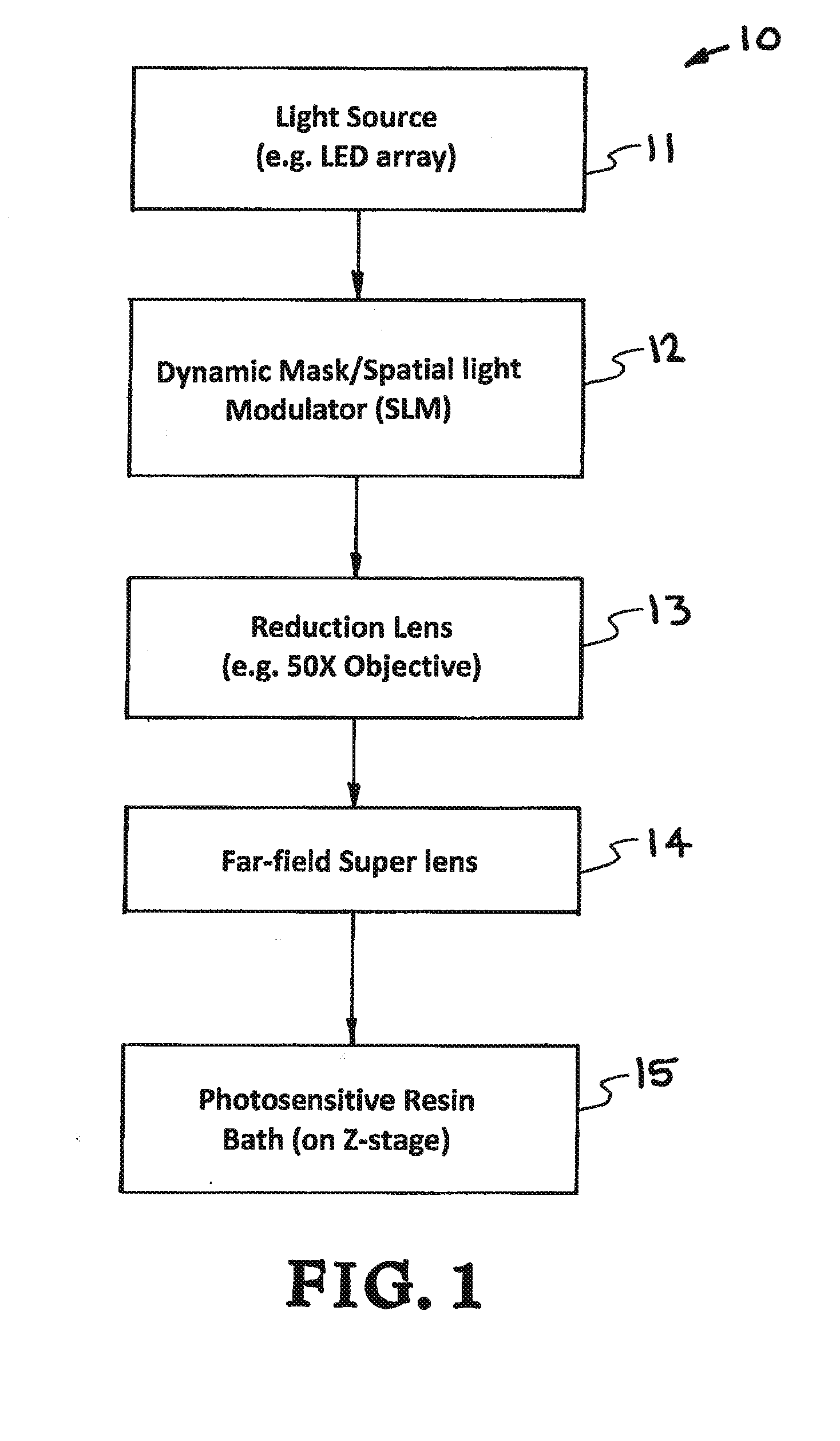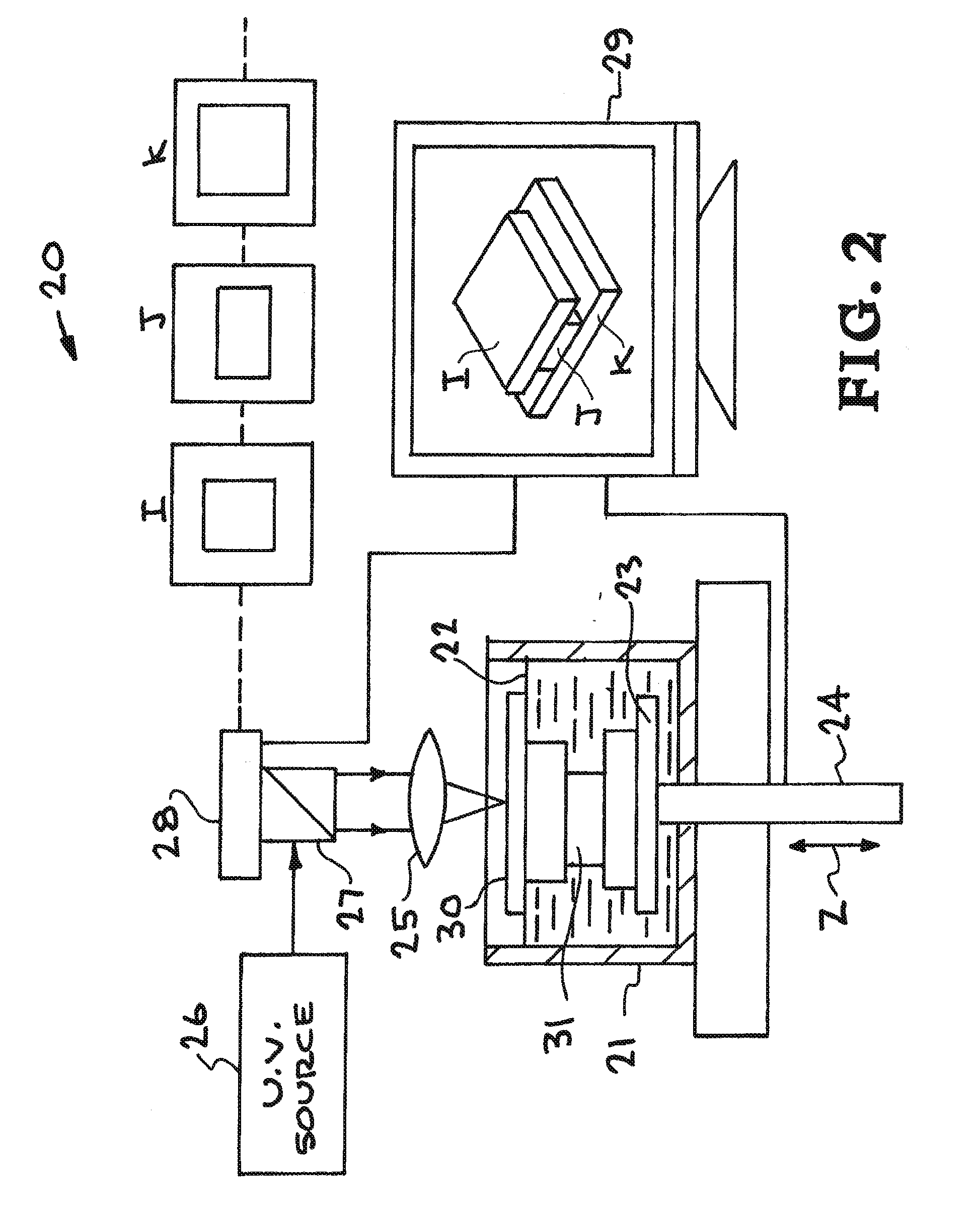High Resolution Projection Micro Stereolithography System And Method
a projection system and stereolithography technology, applied in the field of projection micro stereolithography systems and methods, can solve the problems of limiting the practical number of layers possible, affecting the quality of the material, and the type of resin available for this technique is severely limited, so as to achieve uniform delivery and distribution of materials, enhance the introduction of different types of materials into the bath vessel, and ensure the effect of quality
- Summary
- Abstract
- Description
- Claims
- Application Information
AI Technical Summary
Benefits of technology
Problems solved by technology
Method used
Image
Examples
Embodiment Construction
[0033]Turning now to the drawings, FIG. 1 shows a flow diagram generally illustrating the primary components and the optical path of a first exemplary embodiment of a PμSL system 10 of the present invention to produce three-dimensional structures (e.g. meso- or micro-scale) with sub-diffraction-limited features. As shown in FIG. 1, the system 10 generally includes a light source 11, such as for example a UV LED array, which produces electromagnetic radiation (hereinafter “light”) of a given wavelength, (e.g. 350 nm for UV). The system also includes a SLM 12 which functions as a dynamically configurable mask to produce a two-dimensional pattern / image from the light. The two dimensional image produced from the SLM 12 is then reduced by a reduction lens 13, and projected onto an FSL 14 which is positioned adjacent a photosensitive resin bath 14. The reduced two dimensional image from the SLM (i.e. far field image), is converted by the FSL 14 into a different two-dimensional image (i.e....
PUM
| Property | Measurement | Unit |
|---|---|---|
| thickness | aaaaa | aaaaa |
| thickness | aaaaa | aaaaa |
| thickness | aaaaa | aaaaa |
Abstract
Description
Claims
Application Information
 Login to View More
Login to View More - R&D
- Intellectual Property
- Life Sciences
- Materials
- Tech Scout
- Unparalleled Data Quality
- Higher Quality Content
- 60% Fewer Hallucinations
Browse by: Latest US Patents, China's latest patents, Technical Efficacy Thesaurus, Application Domain, Technology Topic, Popular Technical Reports.
© 2025 PatSnap. All rights reserved.Legal|Privacy policy|Modern Slavery Act Transparency Statement|Sitemap|About US| Contact US: help@patsnap.com



